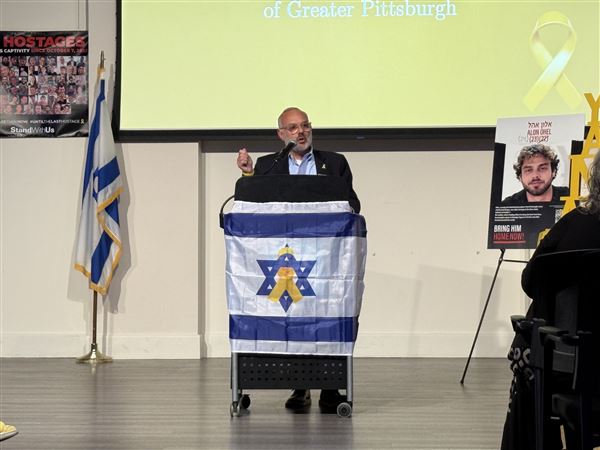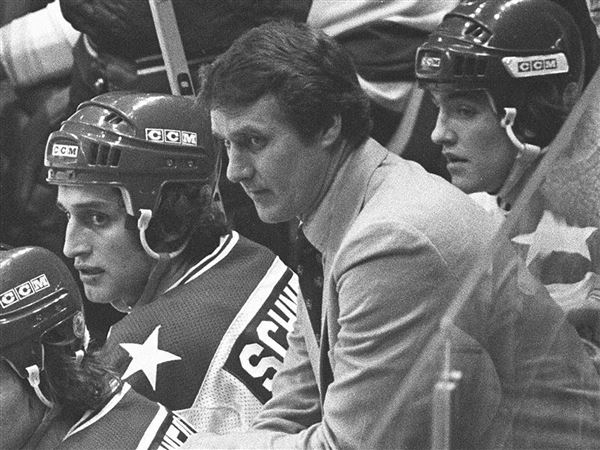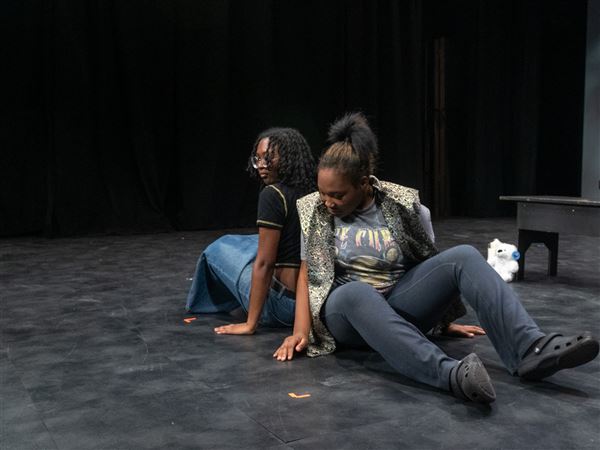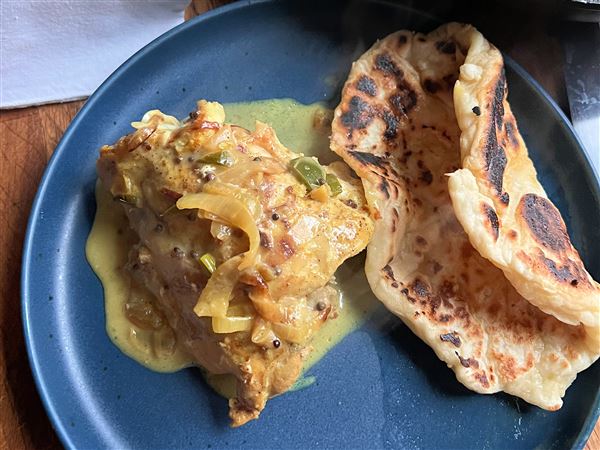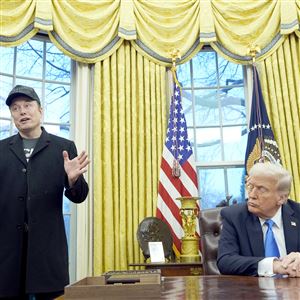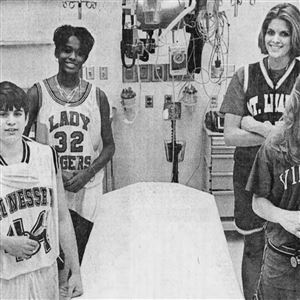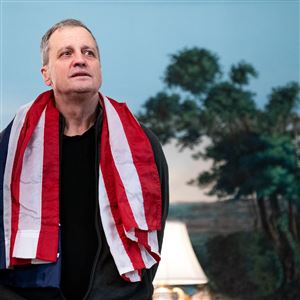Hundreds of thousands of protesters, outraged by a recent massacre at a South Florida school and energized by the students who survived, thronged in streets across the globe in protests on Saturday, demanding action against gun violence in their most ambitious show of strength yet.
In New York, marchers bundled in bright orange — the official color of a gun control advocacy group — charged toward Central Park. In Washington, protesters held signs with the messages “Arms Are for Hugging” and “Never Again.” And in Parkland, Fla., less than a mile from where the shooting took place, one protester’s eyes brimmed with tears, surrounded by the echoing chant, “Enough is enough!”
By late morning, counterprotests were also gaining steam. In Salt Lake City, demonstrators carried pistols and flags. One of their signs read: “What can we do to stop mass shootings? SHOOT BACK.” In Boston, opposing groups of protesters shouted at one another before the police intervened.
Here’s what we’re watching around the globe:
• More than 800 protests were planned in every American state and on every continent except for Antarctica, according to a website set up by organizers. Check out photos from around the world and a map of planned protests.
• The National Park Service approved a permit for the Washington march that estimated 500,000 people could attend. Called March for Our Lives, the main event there started at noon, featuring some of the most prominent student activists from Marjory Stoneman Douglas High School in Parkland, Fla., where a shooting left 17 dead last month.
• The student leaders who organized the day’s events, many of them sharp-tongued and defiant in the face of politicians and gun lobbyists, have kept attention on the issue in a time of renewed political activism on the left, as they helped lead a national school walkout and pushed state officials in Florida to enact gun legislation. The effectiveness of the students’ efforts will be measured, in part, on the success of the demonstrations.
• On Saturday, the White House said in a statement, “We applaud the many courageous young Americans exercising their First Amendment rights today.” On Friday, the Justice Department proposed banning so-called bump stocks, but President Trump signed a spending bill that included only some background check and school safety measures.
• The Times has journalists covering the marches in Washington; New York; Boston; Montpelier, Vt.; Parkland, Fla; Dahlonega, Ga.; Chicago; Salt Lake City; Los Angeles; Anchorage, Alaska; Rome; Berlin; and Tokyo. Follow them on Twitter.
• Sign up for the Morning Briefing for news and a daily look at what you need to know to begin your day.
The student organizers want action in a midterms year.
The student activists emphasized that they would soon have access to the ballot box as they hope to build support for candidates who support universal background checks and bans on assault-style weapons.
Large majorities of Americans say they support gun control measures like universal background checks. Yet when put directly to the people in a referendum in recent years, the results have been mixed. Here is a look at what polling and recent referendums reveal about the political challenges that face the student-led activists.
“What we’re doing is because we’re not scared of these adults,” said Jaclyn Corin, 17, a Stoneman Douglas junior and lead organizer, “because we have nothing to lose, we don’t have an election to lose, we don’t have a job to lose — we just have our lives to lose.”
She compared the march to protests against the Vietnam War and rallies for civil rights. She recently spoke with Representative John Lewis, a key player during the civil rights era. “He said he saw himself and his friends and his movement in us, in our movement,” she said.
In Parkland on Saturday, Sari Kaufman, a Stoneman Douglas sophomore, urged everyone to “turn this moment into a movement” that would toss out of office any politician who took money from the National Rifle Association.
“They think we’re all talk and no action,” she said to loud applause and cheers, and urged the crowd to prove politicians wrong by voting in huge numbers.
“Remember that policy change is not nearly as difficult as losing a loved one,” she said. “Don’t just go out and vote: Get 17 other people to go out and vote.”
The crowd was particularly rousing in its appreciation of Casey Sherman, 17, a Douglas student and one of the Parkland rally organizers.
“My love for Parkland had taken on a whole new meaning,” she said. “After all this heartbreak, we have come back stronger than ever. Those 17 people did not die in vain. We will stop at nothing until we make real, lasting change.”
‘Welcome to the revolution.’
At the rally in Washington, the first speaker onstage was Cameron Kasky, 17, a junior at Stoneman Douglas who last month challenged Senator Marco Rubio of Florida, a Republican, to stop accepting donations from the Nation Rifle Association. Mr. Kasky called for universal background checks on gun sales and a ban on assault rifles.
“To the leaders, skeptics and cynics who told us to sit down and stay silent: Wait your turn,” Mr. Kasky said. “Welcome to the revolution.”
He was followed by Trevon Bosley, 19, of Chicago, whose older brother Terrell died of a gunshot wound in 2006. Gun violence, he said, is “an American problem,” not confined to Parkland or Chicago. “We deserve the right to have a life without fear of being gunned down,” he said.
Another speaker, Edna Chavez, 17, a high school senior in Los Angeles, said she had lost her brother to gun violence. “Ricardo was his name. Can you all say it with me?” she asked.
The crowd said his name over and over again, as Ms. Chavez smiled through tears.
In New York, a Sandy Hook survivor and others reflect.
As the crowd thickened before a rally in front of the Trump International Hotel and Tower near Columbus Circle in Manhattan, Mary Ann Jacobs, 55, of Sandy Hook, Conn., milled in the crowd with her husband.
Ms. Jacobs was a library clerk during the massacre at Sandy Hook Elementary School. She barricaded herself in the school’s library, “in a closet hidden behind file cabinets” along with 18 fourth graders.
“In the months after the shooting it took 100 percent of my personal focus to get up and go to work every day to take care of my surviving students,” she said.
Mara Kleinberg, a high school senior at Churchill Center and School in Manhattan, wore an orange quilted parka and camouflage pants, and carried a sign asking why she should be protesting for her safety instead of learning.
Ms. Kleinberg, 17, said she was looking forward to voting so she could back elected officials who support gun control. “I’m happy that I can vote finally and I hope this movement brings a lot more voters into American politics,” she said.
She added that she had first become aware of the issue after Sandy Hook. As a voter, she said, “I’ll be looking for a lot more regulation: raising the age limit, making sure the kids can’t get guns. It’s kids’ brains that are still developing.”
A group of 14 parents and children had traveled into Manhattan from in and around Fort Lee, N.J., for the rally and march.
Wesley Leung, 9, bounced up and down to ward off the cold. He wore a bright green sign around his neck that said, in all caps, “Enough is enough.”
“I feel like there’s so many of us feel we should’ve done this a long time ago, after Newtown,” his father, Thomas Leung, said.
More than 200 students, teachers and parents from Susan E. Wagner High School in Staten Island packed into four buses headed for Washington.
John Papanier, 17, a senior and student organizer, said that his school had a gun scare a week after the Parkland shooting. “We had a hard lockdown and I was hiding under a desk,” he said. “Nobody should have to go through that.”
Mr. Papanier said he supported raising the gun-buying age to at least 21, from 18.
Opponents of gun control staged their own rallies in Boston and Salt Lake City.
Tensions over guns seemed to converge in Salt Lake City, where a gun rights march kicked off just minutes before a gun control march.
The gun rights rally drew hundreds of people, many carrying signs — “AR-15s EMPOWER the people,” one said.
Brandon McKee was one of the many people with pistols on their hips. His daughter Kendall, 11, held a sign: “Criminals love gun control.”
Mr. McKee said of the Washington marchers: “I believe it’s their goal to unarm America, and that’s why we’re here today. We’re not going to stand idly by and let them tell us what we can and cannot do.”
As the gun rights advocates set off toward the Capitol, some began to heckle a gun control advocate, Linda Peer, 67, who had infiltrated the march line.
“She’s not a true American!” one man yelled. “Shame on you!” the group chanted at her.
At the Capitol, a man in camouflage shouted at another woman who appeared to be part of the gun-restriction group. “You don’t even know what you’re talking about,” he said. “Are you even from this country?”
In Boston, Second Amendment supporters gathered in front of the statehouse with signs that said, “Come and take it.”
“We believe in the Second Amendment,” said Paul Allen, 62, a retired construction worker who lives in Salisbury, Mass. “You people will interpret it the way you want and we’ll interpret it for what it is — that law-abiding citizens who are true patriots have the right to bear arms.”
Mr. Allen described supporters of gun control as “ignorant sheep who are being spoon-fed by liberal teachers.”
“They haven’t read the Constitution and they don’t know what it means,” he said.
In places where gun control is less popular, demonstrators were pooling together, trying to show that support for their cause extends beyond Washington and other large, predominantly liberal cities.
In Vermont, a rural state with a rich hunting culture and some of the nation’s weakest gun laws, marchers gathered on the steps of the Capitol in Montpelier. Organizers hoped that thousands would turn out by the end of the day — an ambitious goal in a city of only 7,500 people.
“I hope the national march is going to be impactful, but at least we know state by state that we can make change,” said Madison Knoop, a college freshman who organized the rally.
In Dahlonega, Ga., several hundred people gathered outside a museum at midday, a surprising show of strength for gun control in an overwhelmingly conservative region.
“We’re going to be the generation that takes down the gun lobby,” Marisa Pyle, 20, said through a megaphone.
Ms. Pyle, a student at the University of Georgia and an organizer of Saturday’s rally in Lumpkin County, challenged critics of the demonstrations across the country.
“I’m starting to think they just want to shut us up because they’re scared of what we have to say,” Ms. Pyle said.
Young people were scattered in a crowd dominated by people in middle age and older. There were few signs of counterprotesters. But as Ms. Pyle led a roll call of the Stoneman Douglas victims, a man in a passing vehicle yelled: “Trump! Trump! Trump!”
Americans in Tokyo, Rome and Berlin showed support.
On Saturday in Tokyo, where guns are highly restricted and shootings are rare, dozens of protesters gathered with signs bearing the names of people who have been killed by gun violence. Participants, many of them American, took turns reading poems or sharing memories of family members or friends killed in shootings.
“Even though I cannot physically be there, I want to support and to be able to help to start a dialogue,” said Mallory Walker, who is from Arkansas and has lived in Tokyo for eight months.
Linda Gould, an American in Japan who organized the vigil, said, “I think it is important not just to call for changes to our gun laws, not just to debate the subtleties of the Second Amendment, but to remember that it is people who have died because of our gun laws.”
And in Nagoya, Japan, Mieko Hattori, the mother of Yoshihiro Hattori, a Japanese exchange student who was shot and killed in Baton Rouge, La., in the early 1990s, said that the students had inspired her.
“I just wanted to convey our message: We support you from Japan,” Ms. Hattori said.
In Rome, demonstrators jammed the sidewalk across from the American Embassy, chanting “hey hey, ho ho, the N.R.A. has got to go” and waving signs that read, “A Gun Is Not Fun” and “Am I Next?”
The speakers at the rally included local students as well as Valentina and Gabriella Zuniga, a freshman and junior at Stoneman Douglas, who were on spring break.
“We knew there were rallies all over the world, and we looked for one in Rome,” said Gabriella, 16, adding that her life had changed drastically since the shooting. “You go into class and see empty desks. It’s different for everyone now.”
Near the Brandenburg Gate in Berlin, 150 to 200 people, most of them Americans, held signs saying “bullets aren’t school supplies” and “Waffeln statt Waffen” (Waffles Instead of Weapons).
Dylan von Felbert, 16, an 11th grader at the John F. Kennedy School in Berlin, said, “Our generation can be very apathetic — myself included — so I think it’s important to support those things you really believe in.”
Reporting was contributed by Annie Correal, Caitlin Dickerson, Jacey Fortin and Jonathan Wolfe from New York; Patricia Mazzei, Sabrina Tavernise and Emily Cochrane from Washington; Julie Turkewitz from Salt Lake City and Denver; Katharine Q. Seelye from Boston; Jess Bidgood from Montpelier, Vt.; Alan Blinder from Dahlonega, Ga.; Elisabetta Povoledo from Rome; Christopher Schuetze from Berlin; and Hisako Ueno from Tokyo.
First Published March 24, 2018, 3:14pm

